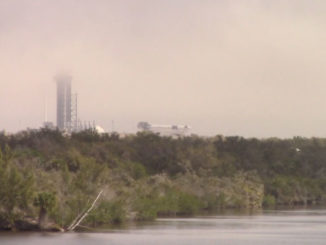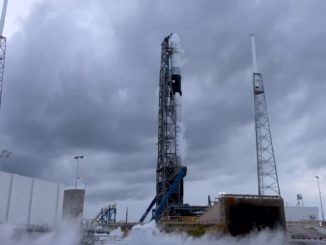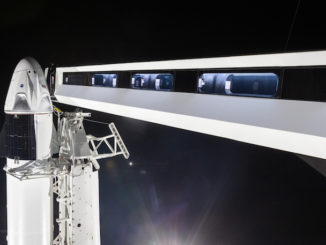STORY WRITTEN FOR CBS NEWS & USED WITH PERMISSION
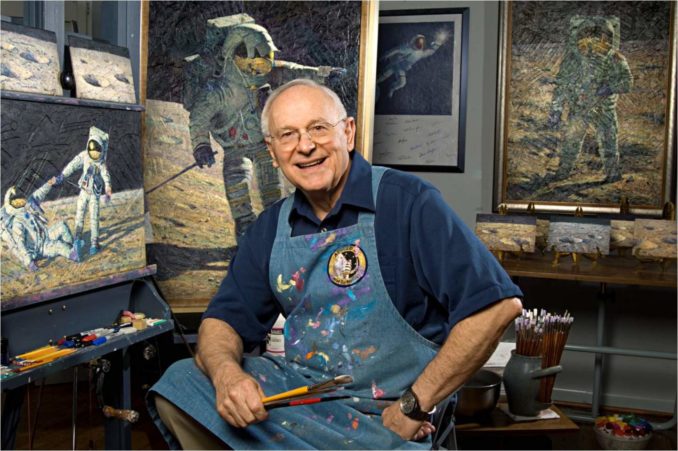
Alan Bean, a Navy test pilot and astronaut who walked on the moon and then spent two months aboard America’s first space station before leaving NASA and becoming an accomplished artist, painting moonscapes and space vistas that garnered widespread critical praise, died Saturday. He was 86.
NASA confirmed Bean’s death in a statement from his family, saying the former astronaut died at Houston Methodist Hospital after a short illness.
“Alan was the strongest and kindest man I ever knew,” his wife, Leslie Bean, said in the NASA statement. “He was the love of my life and I miss him dearly. … Alan died peacefully in Houston surrounded by those who loved him.”
Bean was one of only 12 men to walk on the moon, two in each of six successful lunar landing missions. He is survived by just four moonwalkers: Buzz Aldrin, lunar module pilot of Apollo 11, Dave Scott, commander of Apollo 15, Charlie Duke, lunar module pilot for Apollo 16, and geologist and former U.S. Sen. Harrison Schmitt, lunar module pilot for Apollo 17, the final Apollo moon mission.
“I was fortunate to be the first artist with the opportunity to be in the center of the action to capture what I saw and felt, and bring it back to Earth to share with generations to come,” Bean wrote on his website.
“It is my dream that on the wings of my paintbrush many people will see what I saw and feel what I felt, walking on another world some 240,000 miles from my studio here on planet Earth. I believe my paintings are beautiful and important art. It is art not of the distant past, but art of our time. Art we can understand, important art to us and our descendants because we were there as history was made.”
Andrew Chaikin, author of “A Man on the Moon: The Voyages of the Apollo Astronauts,” said Bean was unique among NASA’s cadre of astronauts, an accomplished test pilot who also had the talent — and confidence — to step away from the apex of an extremely successful technical career to pursue his art with the same single-minded devotion that took him to the moon.
“He was very passionate about his art, he devoted the entire post-NASA part of his life to painting and to recording the Apollo missions as an artist,” Chaikin said. “He was very successful. People paid tens of thousands of dollars for his paintings.”
Bean also was singularly focused, turning out paintings on commission that were striking in their use of bold colors — the red, white and blue of the American flag, for example — set against the stark black-and-white environment of the moon.
Fans paid handsomely for that vision. Bean’s website recently listed paintings with price tags that ranged up to a half-million dollars.
“What one must understand about Alan Bean is he is the only artist to have ever walked on the moon,” Tom Hanks wrote on Bean’s website. “No poet has ever been to the lunar surface, nor any journalist, architect nor songwriter. In the realm of the arts, it has fallen upon Alan Bean to be the one moonwalker to turn hard data brought back from the moon into something other than numbered photographs.
“The images that Al has committed to canvas, then, are important, inspiring and priceless works of art. Not only has he painted the moon, he’s been there.”
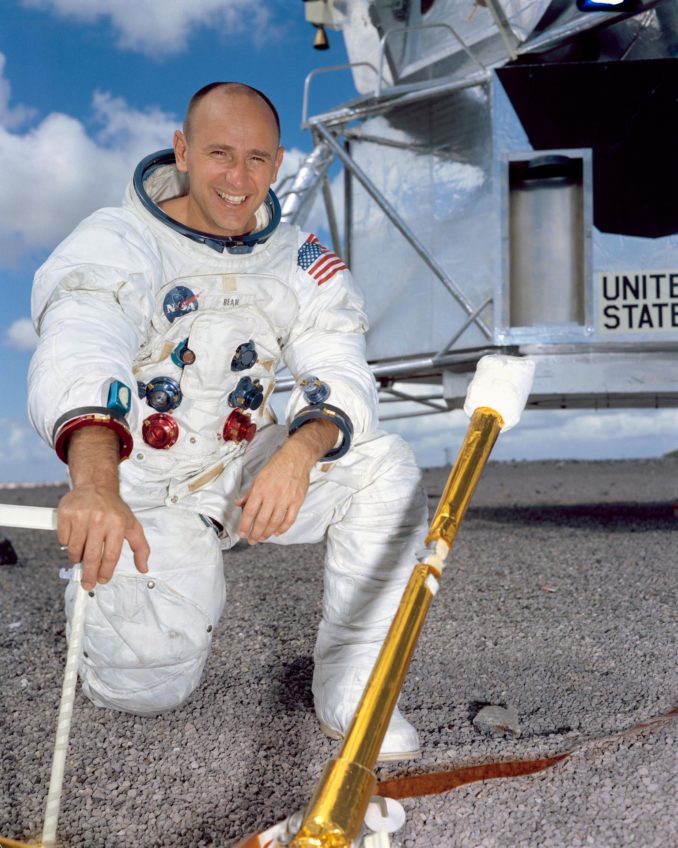
Chaikin said the key to Bean’s success, on Earth and off, was his focus and intensity.
“The thing you have to know about Alan is my God, he was single minded,” Chaikin said. “He was the most single-minded, diligent guy I can think of. He just got up in the morning with his objective and he just didn’t let go of it until it was accomplished. And that included teaching himself to be a better artist. He was absolutely relentless in his pursuit of becoming a better artist.”
In a 1989 interview before the 20th anniversary of the Apollo 11 moon landing, Bean recalled struggling to understand how Monet, one of his favorite artists, had captured the subtle lighting in a painting of a cathedral. So Bean flew to Europe, visited the church and spent days, from dawn to dusk, watching how light played across the structure.
“Alan wanted to understand what Monet actually saw versus what he painted,” Chaikin said, recalling the story. “He went to the place and sat there at different times of day. That’s classic Alan. He was a perfectionist.”
Schmitt recalled phone calls from Bean “to ask about some detail about lunar soil, color or equipment he wanted to have represented exactly in a painting. Other times, he wanted to discuss items in the description he was writing to go with a painting.”
“His enthusiasm about space and art never waned,” Schmitt said in the NASA statement. “Alan Bean (was) one of the great renaissance men of his generation — engineer, fighter pilot, astronaut and artist,
Born in Wheeler, Texas, on March 15, 1932, Bean earned a degree in aeronautical engineering before joining the Navy and eventually winning a coveted assignment to the Naval Test Pilot School at Patuxent River, Md.
In 1963, he was selected in NASA’s third group of astronauts, along with Apollo 11 crew members Aldrin and Mike Collins, Scott and Apollo 17 commander Eugene Cernan, the 12th and last man to walk on the moon.
After serving in backup roles for the Gemini 10 and Apollo 9 missions, Bean was named lunar module pilot for Apollo 12, the second moon landing mission. Perched atop a gargantuan Saturn 5 rocket, Bean and his crewmates — commander Pete Conrad and Richard Gordon — blasted off on Nov. 14, 1969.
The rocket was launched in dismal weather and 36 seconds after liftoff, a lightning bolt hit the Saturn 5 followed 16 seconds later by a second strike, wreaking havoc with the on-board electronics. To call it a frightening moment would be an understatement.
“What the hell was that?” Gordon asked as caution lights flared in the cockpit. “I lost a whole bunch of stuff. I don’t know…”
Moments later, Conrad radioed mission control in Houston, saying “we just lost the (guidance) platform, gang. I don’t know what happened here, we had everything in the world drop out.”
But the Saturn 5 was healthy and an alert flight controller, recalling a similar electrical glitch during training, had the crew change a switch setting in the cockpit and the displays returned to normal.
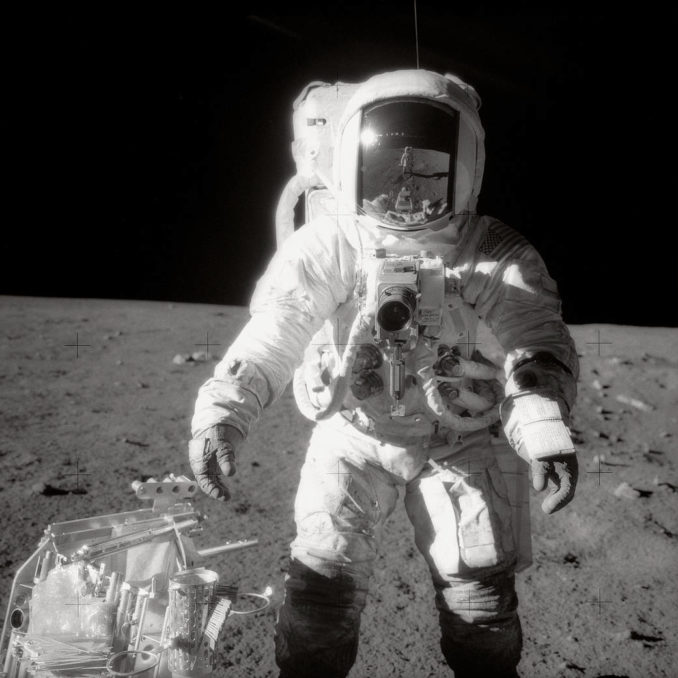
Even without getting hit by lightning, Bean’s first ride aboard a rocket left a lasting impression.
“The noise and the vibration during the launch was so much greater than I anticipated,” he said. “I’d flown a lot of different kinds of airplanes as a test pilot. When that Saturn 5 started rumbling and kicking around, it was so much more than I ever imagined that I thought something was wrong.
“As it turned out, nothing was wrong. I remember it just as a 10-minute ride on something that was so much more powerful and so much more energetic and had so much more potential than I thought anything had that I was just kind of overwhelmed.”
Likewise, the view from orbit.
“The whole thing about the lunar trip was every part of it was more amazing and more science fiction than I imagined it to be,” he said. “The view of the Earth looking back from space, I knew what it was going to look like. But when I actually got there and looked back and saw it sitting out there and realized that everybody but the three of us was down there, it just seemed impossible. It just seemed too amazing to be true. The whole mission went that way.”
Four days after launch, Conrad and Bean left Gordon behind in orbit and landed the lunar module Intrepid near the lip of a crater in the Ocean of Storms.
The goal was to demonstrate a precision landing and the crew did just that, setting down within sight of a robotic Surveyor spacecraft that landed earlier inside the crater. Conrad later snapped a famous photo of Bean standing by the Surveyor spacecraft with Intrepid in the background on the rim of the depression.
The crew hoped to send down the first live color television from the surface during their two moonwalks, but Bean inadvertently pointed the camera at the sun, knocking it out of action.
“He never kind of got over that,” Chaikin said. “He was always sorry that he did that.”
But Bean’s memories of the surface remained sharp in his mind, with all the clarity that later would be reflected in his paintings. In one of those, titled “Heavenly Reflections,” Bean shows himself standing on the moon, his hand on Conrad’s shoulder as they both look back on Earth, which is reflected in their helmets.
“As I touched Pete’s shoulder I thought, can all the people we know, all the people we love, who we’ve seen on TV, or read about in the newspapers, all be up there on that tiny blue and white marble?” Bean wrote of the painting.
“Earth is small but so lovely. It is easily the most beautiful object we could see from the Moon. It was a wondrous moment. If there is a God in heaven, this must be what he sees as he looks toward his children on the good Earth.”
Bean and Conrad spent seven hours and 45 minutes walking on the moon during two excursions, collecting about 75 pounds of lunar rocks and soil, along with components from the Surveyor lander. They blasted off on Nov. 20, one day after landing, rejoining Gordon aboard the command module Yankee Clipper for the trip back to Earth.
“Our ascent (from the surface) was like six minutes and three seconds,” Bean said. “I can remember thinking, I hope this engine runs for six minutes and three seconds! You didn’t have much instrumentation on it because there was nothing you could do about it if it didn’t. … Your life’s on the line. If it doesn’t work, you’re cooked.”
But it did work, and the Apollo 12 crew safely returned to Earth, splashing down in the Pacific Ocean on Nov. 24, 1969.
NASA would launch another five Apollo missions, but Bean never got another chance to visit the moon. But he did get a chance to return to space, serving as commander of the second three-man Skylab space station crew in 1973, logging a then-record 59 days in orbit. His final flight assignment at NASA was backup commander of the Apollo-Soyuz Test Project in 1975.
Bean retired from the Navy that same year but continued to serve as head of the Astronaut Candidate Operations and Training Group at the Johnson Space Center Houston before retiring from NASA in 1981 to pursue his painting career full time.
“His decision was based on the fact that, in his 18 years as an astronaut, he was fortunate enough to visit worlds and see sights no artist’s eye, past or present, has ever viewed firsthand,” NASA said in a 1993 biography. “He hopes to express these experiences through the medium of art. He is pursuing this dream at his home and studio in Houston.”
Bean logged 1,671 hours and 45 minutes in space, including 10 hours and 26 minutes spacewalking on the moon or in Earth orbit. He logged more than 7,145 hours flying time in a variety of aircraft, including 4,850 hours in jets.
“I became an astronaut because they were flying higher and faster and further than anything else,” Bean said. “So I didn’t do it to be an explorer. I did it to be a pilot and do these amazing flying things.”
He is survived by his wife Leslie, his sister Paula Stott, and two children from an earlier marriage, Amy and Clay.

